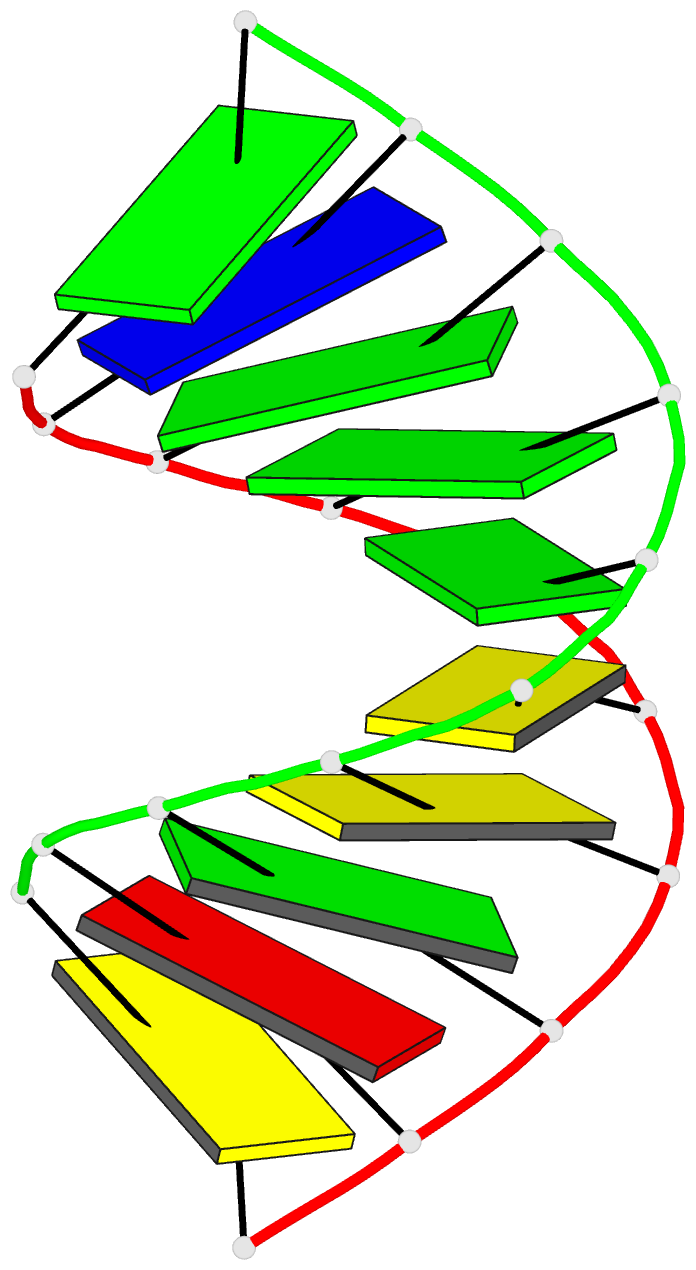Summary information and primary citation
- PDB-id
- 6l75; DSSR-derived features in text and JSON formats
- Class
- DNA
- Method
- X-ray (1.578 Å)
- Summary
- Crystal structure of d(gtgggccgac)2 DNA duplex
- Reference
- Jhan CR, Satange R, Wang SC, Zeng JY, Horng YC, Jin P, Neidle S, Hou MH (2021): "Targeting the ALS/FTD-associated A-DNA kink with anthracene-based metal complex causes DNA backbone straightening and groove contraction." Nucleic Acids Res., 49, 9526-9538. doi: 10.1093/nar/gkab227.
- Abstract
- The use of a small molecule compound to reduce toxic repeat RNA transcripts or their translated aberrant proteins to target repeat-expanded RNA/DNA with a G4C2 motif is a promising strategy to treat C9orf72-linked disorders. In this study, the crystal structures of DNA and RNA-DNA hybrid duplexes with the -GGGCCG- region as a G4C2 repeat motif were solved. Unusual groove widening and sharper bending of the G4C2 DNA duplex A-DNA conformation with B-form characteristics inside was observed. The G4C2 RNA-DNA hybrid duplex adopts a more typical rigid A form structure. Detailed structural analysis revealed that the G4C2 repeat motif of the DNA duplex exhibits a hydration shell and greater flexibility and serves as a 'hot-spot' for binding of the anthracene-based nickel complex, NiII(Chro)2 (Chro = Chromomycin A3). In addition to the original GGCC recognition site, NiII(Chro)2 has extended specificity and binds the flanked G:C base pairs of the GGCC core, resulting in minor groove contraction and straightening of the DNA backbone. We have also shown that Chro-metal complexes inhibit neuronal toxicity and suppresses locomotor deficits in a Drosophila model of C9orf72-associated ALS. The approach represents a new direction for drug discovery against ALS and FTD diseases by targeting G4C2 repeat motif DNA.





